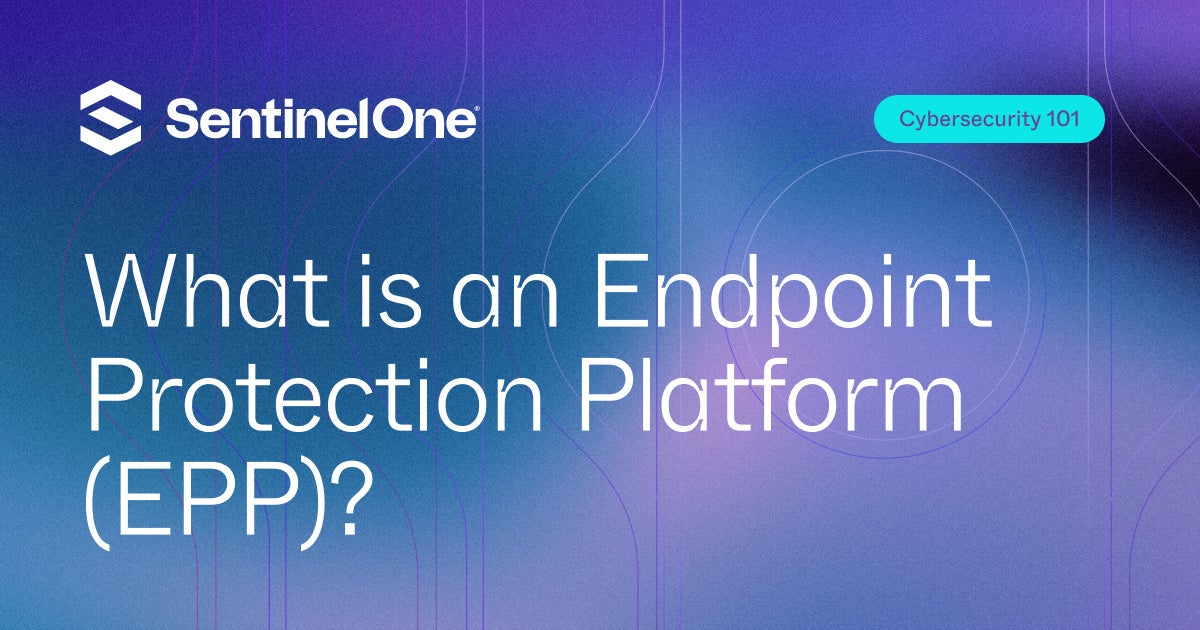Endpoint Protection Platforms (EPP) are security solutions designed to protect endpoints from threats. This guide explores the key features of EPP, including malware detection, data loss prevention, and threat intelligence.
Learn about the importance of EPP in a comprehensive security strategy and best practices for implementation. Understanding EPP is crucial for organizations to safeguard their devices and data.

What Is an Endpoint?
An endpoint refers to parts of a network where communications originate and/or where they are received. Communications, in this context, can refer to direct human input, through computer-to-computer communications (e.g., servers), or even environmental sensors (e.g., IoT devices). Traditionally, we think of a desktop computer, or any sort of computing terminal, as an endpoint, while behind-the-scenes infrastructure like routers and cables would normally not be considered endpoints.
Today, beyond dedicated terminals, many types of devices can act as endpoints. Examples of modern endpoints include:
- Desktops
- Laptops
- Smartphones
- Smartwatches
- Point-of-Sale (POS) systems
- Internet of Things (IoT) devices
- Medical devices
- Servers
Origins and Purpose of EPPs
EPPs were developed to identify attacks that would normally evade traditional endpoint security, consolidating tools like antivirus protection, data encryption and security, and intrusion prevention into one cloud-managed system. Consolidation allows IT personnel to monitor all endpoints in one location, enabling more thorough and automated data sharing and analysis and allowing for complex threat analysis that wouldn’t be possible using tools in isolation. Because of their cloud-managed nature, EPPs can even take advantage of global threat data, benefiting from other networks’ experience to enhance overall threat prevention.
EPPs may include endpoint detection and response (EDR) capabilities, helping security personnel respond to threats that have slipped by the system’s defensive screen. EDR capabilities, however, are not necessarily an aspect of all EPP platforms, and IT staff should consider whether this is offered when considering an EPP system.
Why Is Endpoint Security Via EPPs Important?
In a network setting, endpoints are typically considered to be the most vulnerable part of any system. There are a variety of reasons for this, but it largely comes down to personnel and the different types and sheer number of endpoints used to access a network. System compromise means potential cyber-attacks, which can be extremely expensive, both in terms of direct monetary costs and remediation efforts.
People with a wide range of computer knowledge and cybersecurity training use computing systems that access a company’s network. This can take place in a wide range of settings, which may not be well controlled or easily monitored by company IT staff. Consider that an employee may have extensive IT security knowledge and won’t open a suspicious email. Or perhaps they are not security conscious at all and will happily install “networkscrambler.exe” on his endpoint. The employee may only use a desktop at the office or prefer to work on a 5-year-old iPad via a coffee shop’s unsecured WiFi.
There may be ten of these employees or 10,000, all with their own personal and device profiles, doing a wide range of things from day to day. Each of these person/device combinations is a (likely unknowing) threat to the network.
Not only is the variety of different threats a problem, but it presents a massive attack surface. While most employees may practice good data hygiene, a comprehensive EPP allows staff to monitor all endpoints at once to prevent the single careless employee from compromising the network.
Endpoint Protection Platform (EPP) vs. Endpoint Detection and Response (EDR)
EPPs give an overall framework for IT personnel to defend endpoints and the overall network. Some EPPs also include the ability to detect and respond to threats once they have penetrated a network in the form of an endpoint and detection response (EDR).
While many EPPs do include EDR capabilities, these are distinct functions. Although an EPP ideally stops all threats, the reality is that a network may be penetrated. A plan and system need to be in place to respond. This, of course, must be balanced with system usability and cost, and IT staff might also consider other EDR options separate from their EPP.
All things being equal, having more tools in one’s cyber defense arsenal is typically a good thing. However, IT staff must be trained on its use, and the system properly deployed. Having an unused, or even unknown, capability is often the same as not having it at all.
FAQ
What is the difference between anti-virus software and EPP systems?
Antivirus software is typically focused on the consumer level and a single device. In contrast, an EPP focuses on devices like laptops and smartphones in the context of securing an overall network.
What does EPP stand for in security?
EPP in the context of cybersecurity stands for endpoint protection platform. EPPs are comprehensive network solutions that keep endpoints (e.g., laptops, smartphones) secure, while protecting the overall network from malware and cyberattacks.
Is EPP or EDR better for cybersecurity?
EPP, or endpoint protection platforms, attempt to keep threats out of a network by monitoring endpoints like laptops, IoT devices, and smartphones. EDR platforms, or Endpoint Detection and Response, find and fight threats once they’ve already infected a system. Ideally, both systems should be used together, and EPP platforms often include EDR capabilities in their overall offering. One is not better than the other, but they serve different purposes for network security.
Conclusion
EPPs, or Endpoint Protection Platforms, focus on protecting a network’s endpoints, which tend to be the most vulnerable points of attack to a system’s overall security. Because of this, EPPs are extremely important to a business or other entity’s overall operation, providing a robust defense against cyber intrusions. Some EPPs also include Endpoint Detection and Response (EDR) capabilities, though this is not necessarily the case for all EPPs.